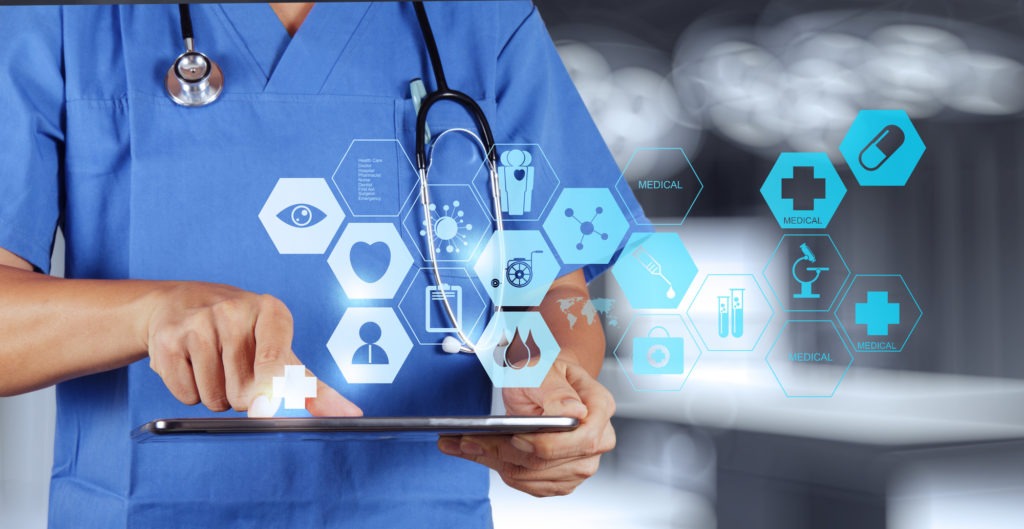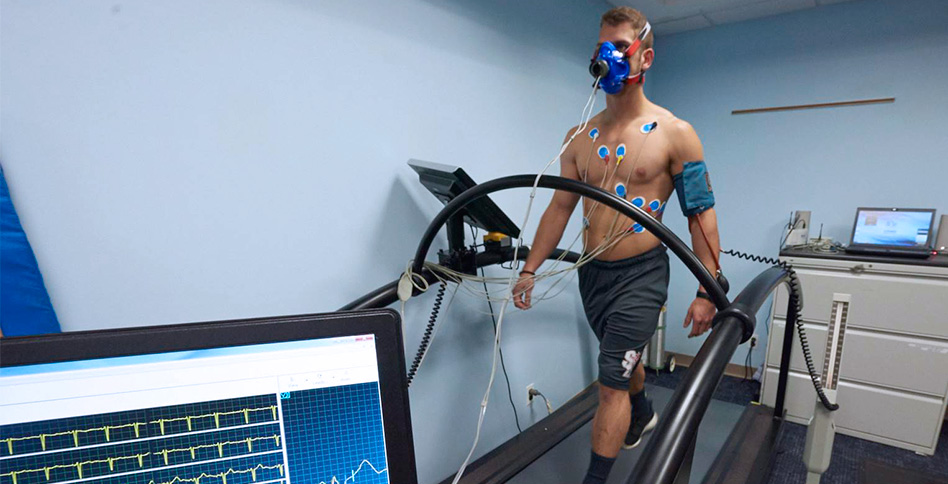
Augmented reality (AR) has emerged as a transformative technology in the field of medicine, revolutionizing various medical applications. From guiding surgeries to improving medical visualization, assisting in diagnosis, enhancing medical education, and shaping the future of medical technology, AR is making significant strides in transforming the way healthcare professionals operate.
By overlaying virtual information onto the real-world environment, AR provides unprecedented opportunities for precision, efficiency, and enhanced patient outcomes.
This article explores how AR is being utilized across different medical domains and highlights its potential implications for the future of medicine.
Key Takeaways
- Augmented reality (AR) is being used in various medical applications to guide surgeries, improve medical visualization, assist in diagnosis, and enhance medical education.
- AR provides real-time visual overlays and guidance during complex surgeries, improving precision and accuracy in surgical procedures.
- AR helps in pre-operative planning and intra-operative guidance, allowing for clearer communication between healthcare providers and patients.
- AR assists in accurate diagnosis by providing valuable information and data analysis, early detection capability, and precise targeting of affected areas during biopsies or surgeries.
Guiding Surgical Procedures
Augmented reality is utilized in guiding surgical procedures, providing real-time visual overlays and guidance during complex surgeries to enhance precision and accuracy.
One application of augmented reality in surgery is surgical navigation, which involves the use of computerized imaging techniques to create a virtual map of the patient's anatomy. Surgeons can then use this map to guide their movements during the procedure, ensuring that they stay on track and avoid critical structures.
Augmented reality also enables the use of augmented surgical tools, such as smart glasses or headsets, which display relevant information directly in the surgeon's field of view. This allows surgeons to have access to important data without having to divert their attention from the patient.
By incorporating augmented reality into surgical procedures, medical professionals are able to improve their visualization capabilities and ultimately enhance patient outcomes.

Improving Medical Visualization
One notable application of AR in the medical field involves enhancing the visual representation of medical data and images. Augmented reality technology has the potential to greatly improve medical visualization through virtual simulations and 3D modeling. By overlaying digital information onto real-world environments, AR allows healthcare professionals to better understand complex anatomical structures and visualize medical data in a more intuitive way.
This can assist in pre-operative planning, as well as intra-operative guidance during procedures. The use of AR in medical visualization also enables better communication between healthcare providers and patients by providing a clearer understanding of their condition or treatment options. Additionally, it can enhance medical education by providing students with interactive tools for learning complex concepts and practicing procedures virtually.
Overall, improving medical visualization through augmented reality has the potential to revolutionize healthcare practices and improve patient outcomes.
- Enhanced understanding of anatomical structures
- Improved pre-operative planning
- Intra-operative guidance
- Better communication between healthcare providers and patients
- Enhanced educational tools for students
Assisting in Diagnosis
Assisting in diagnosis, augmented reality technology has the potential to provide healthcare professionals with valuable information and data analysis that can aid in accurately identifying and determining medical conditions. By incorporating AI assistance, AR systems can analyze patient data and medical images to detect patterns or anomalies that may not be easily identifiable by human observation alone.
This early detection capability allows for prompt intervention and treatment initiation, potentially improving patient outcomes. AR can also assist in diagnosing complex conditions by overlaying virtual models onto real-world patient images, providing a more comprehensive understanding of the disease process.
Furthermore, AR-guided diagnostic procedures enable precise targeting of affected areas during biopsies or surgeries, reducing invasiveness and enhancing accuracy.
Overall, the integration of augmented reality into medical practice has the potential to revolutionize diagnosis by offering advanced tools that enhance accuracy, efficiency, and early detection.

Enhancing Medical Education
The integration of augmented reality technology into medical education has the potential to transform the way healthcare professionals learn and acquire knowledge. Augmented reality (AR) offers simulation training that allows students to practice procedures in a safe and controlled environment. This technology provides a realistic experience by overlaying virtual objects onto the real world, enabling students to interact with virtual patients and equipment.
AR also enhances medical education by providing detailed visualizations of complex anatomical structures through virtual anatomy modules. Students can explore interactive 3D models of organs, bones, and tissues, gaining a deeper understanding of their structure and function. This immersive learning experience helps students develop critical thinking skills and prepares them for real-life clinical scenarios.
With its ability to provide hands-on training and enhance visualization, augmented reality is shaping the future of medical education, ensuring that healthcare professionals are well-equipped to deliver high-quality patient care.
Shaping the Future of Medical Technology
Advancements in technology have revolutionized the medical field, with the integration of cutting-edge tools and techniques that are reshaping patient care and treatment. One area where this is particularly evident is in the shaping of future medical technology.
Augmented reality (AR) is playing a significant role in this domain by integrating artificial intelligence (AI) and remote patient monitoring systems. By combining AR with AI algorithms, healthcare professionals can access real-time data about patients, such as vital signs and diagnostic imaging results, directly through their smart glasses or headsets. This allows for more accurate diagnosis and treatment planning, as well as improved patient outcomes.
Furthermore, AR enables remote patient monitoring, allowing healthcare providers to monitor patients' health conditions from a distance. This has proven to be especially valuable during the COVID-19 pandemic when minimizing contact between healthcare providers and patients is crucial.
As technology continues to advance, we can expect even greater integration of AI algorithms into AR systems, leading to further advancements in medical technology and ultimately improving patient care on a global scale.

Frequently Asked Questions
What are some specific examples of surgical procedures that can be guided using augmented reality?
AR guided surgeries utilize augmented reality technology to enhance surgical procedures. Examples include AR-assisted spine surgeries, where surgeons can visualize patient-specific anatomy in real-time, and AR-guided laparoscopic procedures, which improve precision and reduce complications.
How does augmented reality improve medical visualization compared to traditional methods?
Augmented reality (AR) offers advantages in medical visualization compared to traditional methods. It provides real-time, interactive 3D models and overlays that enhance understanding, accuracy, and spatial perception, improving surgical planning, anatomy education, and diagnostic interpretation in various medical applications.
Can augmented reality assist in diagnosing medical conditions that are difficult to detect with traditional methods?
Augmented reality (AR) can assist in diagnosing rare medical conditions that are difficult to detect with traditional methods. It provides enhanced visualization, real-time data integration, and guidance for accurate diagnosis. AR also enables remote medical diagnosis, improving access to specialized expertise.
What are some ways in which augmented reality enhances medical education for students and professionals?
Immersive learning through augmented reality (AR) enhances medical education by providing realistic training simulations. Students and professionals can practice procedures, anatomical examinations, and diagnostic skills in a safe and controlled environment, improving their knowledge, confidence, and proficiency.
What potential advancements can be expected in the future of medical technology with the use of augmented reality?
Advancements in medical technology can be expected through the use of augmented reality (AR), which has potential impacts on medical research. AR can revolutionize surgical procedures, enhance diagnostic accuracy, improve treatment planning, and enable remote consultations, ultimately leading to improved patient outcomes.
 GadgetsProduct ReviewsSmart DevicesDronesVirtual DevicesPrivacy PolicyTerms And Conditions
GadgetsProduct ReviewsSmart DevicesDronesVirtual DevicesPrivacy PolicyTerms And Conditions
